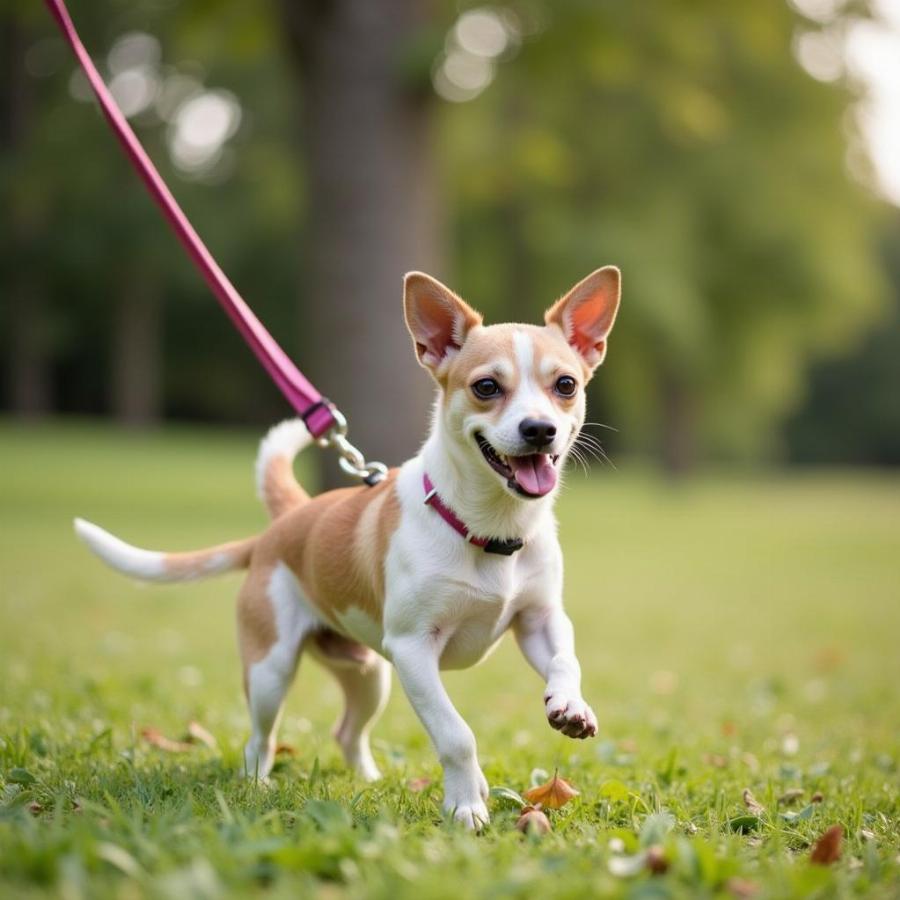The term “two hands dog” often sparks curiosity among dog lovers. While it might conjure up images of a massive canine requiring two hands to hold its leash, the reality is often more nuanced. This article will delve into the meaning behind “two hands dog,” exploring the factors that contribute to this perception and offering valuable insights for dog owners. We’ll examine various breeds, training techniques, and management strategies to ensure a safe and enjoyable experience with your furry companion.
What Does “Two Hands Dog” Really Mean?
A “two hands dog” typically refers to a dog that pulls strongly on the leash, requiring considerable strength and both hands to maintain control. This can be due to a variety of reasons, including breed characteristics, lack of training, excitement, or fear. It’s important to remember that any dog, regardless of size, can become a “two hands dog” if not properly trained. Understanding the underlying causes of leash pulling is crucial for addressing the issue effectively and building a positive relationship with your dog. Are you struggling with a dog that pulls relentlessly? Let’s explore some solutions.
Breed-Specific Considerations for “Two Hands Dogs”
Certain breeds are naturally more prone to pulling on the leash due to their inherent energy levels and working history. For instance, Huskies, Malamutes, and other sledding breeds were bred to pull heavy loads, making them naturally inclined to exert force on the leash. Similarly, herding breeds like Border Collies and Australian Shepherds have strong herding instincts, which can manifest as pulling if not properly channeled. However, it’s important to note that even smaller breeds can become “two hands dogs” if not trained correctly. Just because a dog is small doesn’t mean it won’t pull!
 Small Dog Pulling on Leash
Small Dog Pulling on Leash
Training Techniques to Avoid the “Two Hands Dog” Scenario
Proper training is paramount to prevent your dog from becoming a “two hands dog.” Positive reinforcement methods, such as rewarding your dog for loose-leash walking, are highly effective. Consistency is key, and starting training early is crucial for establishing good habits. Tools like harnesses and head halters can also be beneficial, but it’s important to use them correctly and in conjunction with training.
Harness vs. Collar: Which is Better for a “Two Hands Dog”?
While collars can exacerbate pulling, harnesses distribute pressure more evenly across the dog’s body, providing better control and reducing strain on the neck. There are many types of harnesses available, so it’s important to choose one that suits your dog’s size and breed. Consult with a professional dog trainer for personalized recommendations. Do you know which harness is best for your dog? Read more about anatomy of a dog paw for a better understanding of their physical needs.
Positive Reinforcement: The Key to Loose-Leash Walking
Rewarding your dog for walking calmly by your side with treats, praise, or toys can make a significant difference. Keep training sessions short and fun, and gradually increase the duration as your dog progresses. Remember, patience and consistency are key to success. Have you considered rewarding your dog for good behavior? Check out our review of two hands corn dogs reviews. Though not for your dog, it illustrates the power of positive reviews!
Managing a “Two Hands Dog” in Public
Even with training, there might be situations where your dog gets excited and pulls on the leash. Having a solid “leave it” command can be invaluable in redirecting your dog’s attention away from distractions. Carrying high-value treats can also help you regain control in challenging situations. For information on the cost of dog treats, check out two hands corn dogs prices to compare prices and find the best deals.
Conclusion
The “two hands dog” concept highlights the importance of training and management for a positive dog ownership experience. By understanding the factors that contribute to leash pulling and implementing effective training techniques, you can ensure enjoyable walks with your furry friend. Remember, consistency, patience, and positive reinforcement are key to achieving a harmonious relationship with your dog. Don’t let your dog become a “two hands dog” – start training today! Learn more about delicious options by exploring the two hands corn dogs menu or visit our two hands corn dog broadway location for a delightful treat.
FAQ
- Can any dog become a “two hands dog”? Yes, any dog, regardless of size or breed, can develop leash pulling habits if not trained properly.
- What are the best tools for managing a “two hands dog”? Harnesses and head halters can be beneficial, but they should be used in conjunction with training.
- How can I train my dog to walk on a loose leash? Positive reinforcement methods, such as rewarding your dog for loose-leash walking, are highly effective.
- What should I do if my dog pulls on the leash in public? Having a solid “leave it” command and carrying high-value treats can help redirect your dog’s attention.
- Is it too late to train an older dog to stop pulling? It’s never too late to train a dog! Older dogs can still learn new behaviors with patience and consistency.
Beaut Dogs is your one-stop resource for all things dog-related. We provide expert advice and guidance on everything from breed selection to training and care. When you need support, contact us via Email: [email protected] for detailed and accurate answers from Beaut Dogs. We are dedicated to helping you navigate the wonderful world of dog ownership. Visit us at https://beautdogs.com today!